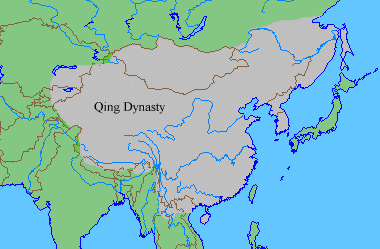
Qing dynasty, Wade-Giles romanization Ch’ing, also called Manchu dynasty, Pinyin Manzu, last of the imperial dynasties of China, spanning the years 1644 to 1911/12. Under the Qing the territory of the empire grew to treble its size under the preceding Ming dynasty (1368–1644), the population grew from some 150 million to 450 million, many of the non-Chinese minorities within the empire were Sinicized, and an integrated national economy was established.
The Qing dynasty was first established in 1636 by theManchus to designate their regime in Manchuria (now the Northeast region of China). In 1644 the Chinese capital atBeijing was captured by the rebel leader Li Zicheng, and desperate Ming dynasty officials called on the Manchus for aid. The Manchus took advantage of the opportunity to seize the capital and establish their own dynasty in China. By adopting the Ming form of government and continuing to employ Ming officials, the Manchus pacified the Chinese population.
To guarantee Manchu control over the administration, however, the Qing made certain that half the higher-level officials were Manchus. Chinese military leaders who surrendered were given ranks of nobility, and troops were organized into the Lüying, or Army of the Green Standard, which was garrisoned throughout the country to guard against local rebellions. The regular Manchu Banner System troops (Qibing, or Baqi) were kept at the capital and in a few selected strategic spots throughout the country.
Under Kangxi (reigned 1661–1722), the second Qingemperor, the Manchus forced the Russians to abandon their fort at Albazin, located along the Manchurian border on theAmur River. In 1689 a treaty was concluded with Russia atNerchinsk demarcating the northern extent of the Manchurian boundary at the Argun River. Over the next 40 years the Dzungar Mongols were defeated, and the empire was extended to include Outer Mongolia, Tibet, Dzungaria,Turkistan, and Nepal. Under the two succeeding emperors,Yongzheng (reigned 1722–35) and Qianlong (reigned 1735–96), commerce continued to thrive, handicraft industries prospered, and Roman Catholic missionaries were tolerated and employed as astronomers and artists. In addition, painting, printmaking, and porcelainmanufacture flourished, and scientific methods of philology were developed
No comments:
Post a Comment